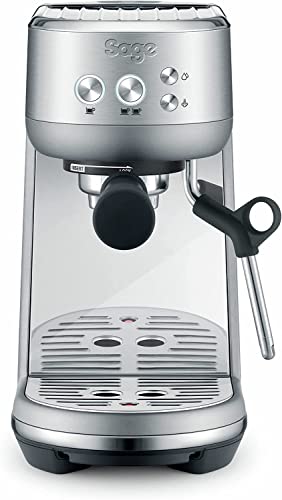Should You Buy an Espresso Machine?
Espresso machines require higher temperatures and pressure than standard coffee makers. They also make more concentrated and full-bodied coffee.
Dual boilers are the ideal option as they let you steam milk and make espresso simultaneously. This is a major upgrade from most single-boiler machines.
Below are some examples of
Making espresso of a professional quality at home was once a task that required an enormous amount of expertise However, newer machines have made it possible for beginners to pull off a quality shot. One of the most important features is the pressure gauge, which lets you check the pressure of water in the pump during operation. It helps to prevent channeling, which can cause weak shots. This feature is found on higher-end models.
Another important feature is a pre-infusion, which helps to ensure that all of the grounds are filled with water, which is important to extract the coffee. It's also on most expensive machines, and it helps reduce the risk of burning the coffee.
You should also consider whether you'd prefer semi-automatic or automatic machines. Super-automatic machines are foolproof and allow you to make espressos and milk drinks with a click of a button. These machines are expensive and may not be for you if you prefer to do the grinding, tamping and steaming of milk your self.
To have a more customized experience, you can opt for a semi-automatic model that includes the bean hopper and grinder. These machines have a more traditional appearance and allow you to control the espresso process, including grind settings and temperature. These machines are less expensive, but require more effort from the user.
Cost
There are many options available when choosing an espresso maker. The choice is contingent on the way you plan to use it and what features are most important to you. Generally speaking, more features will result in a higher cost. You might consider whether you'd like to be able to begin and stop brewing by hand or if a fully automatic model is more appealing.
The most basic domestic espresso machines come with two ports: a portafilter and a container that you connect by hand, and they require regular cleaning of the portafilter as well as the milk jug. Descaler treatments are typically required every two months to keep the machines in good condition. Some models come with built-in filters that reduce the hardness and enhance the taste.
Professional espresso machines usually have dual boilers, which allow you to steam and brew milk simultaneously. espresso coffee machine home reduces time and ensures that each function is cooked at the proper temperature. Having a professional-grade espresso machine in your home will make it easy to create delicious lattes, cappuccinos, flat whites, and other drinks.
Certain espresso machines have the option of a manual control for grinder regulation, the amount of coffee and tamper pressure to give you the experience of a barista at home. These machines are more costly than semi-automatics, but they're perfect for people who love making coffee.
Types
Whether you're looking to buy or lease an espresso machine or lease it, you need to consider the options carefully. A lease machine will require less upfront money, but you'll be obligated to an agreement that can increase the cost of maintenance in the future. You'll have to pay more upfront, however, the equipment will be yours.

The type of espresso maker you choose will depend on the kind of coffee you serve and your preferences. Most models come with steam wands to heat and froth the milk for lattes and cappuccinos. Some models also come with a removable dishwasher-safe jug, which can be used to make large quantities of iced drinks or coffee.
There are models that are fully automated, that grind, measure and tamp your beans, and also use pre-measured pods for a convenience. These models are typically the most user-friendly in Lab tests, however they are more expensive than semi or manual automated models.
There are multi-boiler and single boiler machines that are more stable than other types making it possible to make consistently delicious espresso. These machines are more expensive and require more space on counters.
Maintenance
A well-maintained espresso machine will ensure that your coffee tastes at its best. Regular cleaning and descaling also prolong the life of your espresso maker. Cleaning it regularly will prevent the build-up of coffee oils that are rancid, which can alter the flavor of your espresso.
Giorgio recommends that you select an appliance that has an insulated brew unit that can be removed and drip tray that is easy to clean. He suggests you save time and money by not having to clean the drip tray, as well as getting rid of the expense of an additional coffee maker.
A high pressure in the water will also aid in creating a rich, even crema and an even extraction. A good machine will be able to achieve a pressure of 9 bars or more.
Take note of the space available in your kitchen and whether or not you're planning to plumbed it. If you're short on cabinet space, go for an electric model that is portable. It can be used without the need to connect a water line. A drip-free model will help you avoid the hassle of emptying out a waste bin after every use. Make sure that you purchase an espresso maker equipped with a tank for water that is easy to fill, take out and clean.
